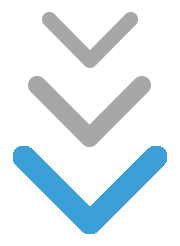

Also known as a 'reverse home loan', 'senior finance' or an 'equity release loan', reverse mortgages are a common form of home equity release in Australia.
Allowing borrowers from the age of 60 to convert equity into cash for a worthwhile cause, a reverse mortgage enables you to borrow money against the equity you have in your home as security.

The amount of equity that can be released is determined by your age and the value of the security of the property.
Once the loan is approved, you can access your money to use however you wish, and the lender will proceed to charge interest on the amount owing. Generally, the amount of interest is calculated daily on the outstanding balance and represented as a single amount each month in arrears.
There are no repayments required by you to repay a reverse mortgage while it is current. Instead, the interest payments are added onto the loan balance each month.
The loan amount can be taken as one of the following, or a combination of the following:
The debt can be repaid to the lender when:
The older you are, the more you can borrow. Different lenders may have different policies about how much they will let you borrow.
As a general guide, if you are 60 the maximum amount you can borrow is likely to be 15-20% of the value of your home. You can usually add 1% for each year older than 60. That means if you are 70, the maximum amount you could borrow would be about 25-30%.
The minimum amount you can borrow may depend on the provider. It could be as low as $10,000. Keep in mind that if you borrow the maximum amount now, you may not have access to any more money later.
Unlike traditional mortgage products, with a reverse mortgage you don't have to make monthly repayments to the lender. Instead, you receive the loan either through monthly payments, a line of credit or a lump sum- or a combination of these- and then repay the debt when you sell your home or meet one of the above criteria.
Another point of difference is that the amount you're able to borrow isn't determined by your income- like a traditional mortgage- but rather you're able to borrow a certain percentage of the available equity you have in relation to the value of your home.
If you want to access equity in your property, but you don't want to take out a reverse mortgage, the primary alternative is to sell or downsize your home. However, this will incur substantial costs such as stamp duty, agent and conveyancing fees so it's a good idea to weigh the benefits and risks involved.
The largest costs associated with a reverse mortgage apart from interest are the application and interest charges.
Establishment fees can be high and interest rates are usually much higher than those set on regular mortgages. Set up costs for a reverse mortgage may vary between $1,500 - $2,000 depending on the lender. This typically covers the lender application fee, government charges, legal charges and any broker fees.
The interest charges will compound with each month, with interest being charged on previous interest amounts that have been capitalised onto the loan. For this reason, it's important to use the right type of calculator that will consider this compounding effect.
To minimise the risk of paying too much interest, you should only borrow what you need. Carefully consider the current value of your house and the amount of equity you intend to borrow from it. Speak to a mortgage broker or financial planner to determine how much the interest charges will be in total.
You aren't expected to repay the reverse mortgage in full until:
You aren't expected to repay the reverse mortgage in full until:
Reverse mortgages can be beneficial for those people who find they suddenly don't have enough money to fund their retirement or lifestyle plans.
Whether you choose to fund investment opportunities to help supplement your retirement income further, you decide to purchase a new car, or you decide to go travelling, ensure that you seek advice from a financial planner before applying for a reverse mortgage.
Unexpected medical bills can be a source of financial distress for many retirees, so it can be helpful to have a source of cash available in case of just such an emergency. Similarly, emergency repairs to your home or car can also be sources of financial difficulty if you don't have the contingency funds available.
You may choose to use your funds to assist family members with their own goals. Grandchildren may have expensive education costs or they may require assistance with a deposit on a first home.
Be mindful that all loans come with risks so before you apply for an equity release loan, ensure that you understand the risks involved. Fortunately, the risks associated with a reverse mortgage loan have been reduced as new legislation, such as 'negative equity protection', protects you from owing more than what your home is worth.
The lender should be able to provide you with a product information statement that outlines:
The lender should be able to estimate the reverse mortgage calculations for you, which should illustrate:
Check the terms of the cooling off period to see what the conditions are if you change your mind.
Ask the lender what will happen in the event that you or your spouse passes away. Check to see if you need the lender's permission to sell, lease or vacate your home or have someone move in with you.